Detox Your Home
BEGINNERS GUIDE
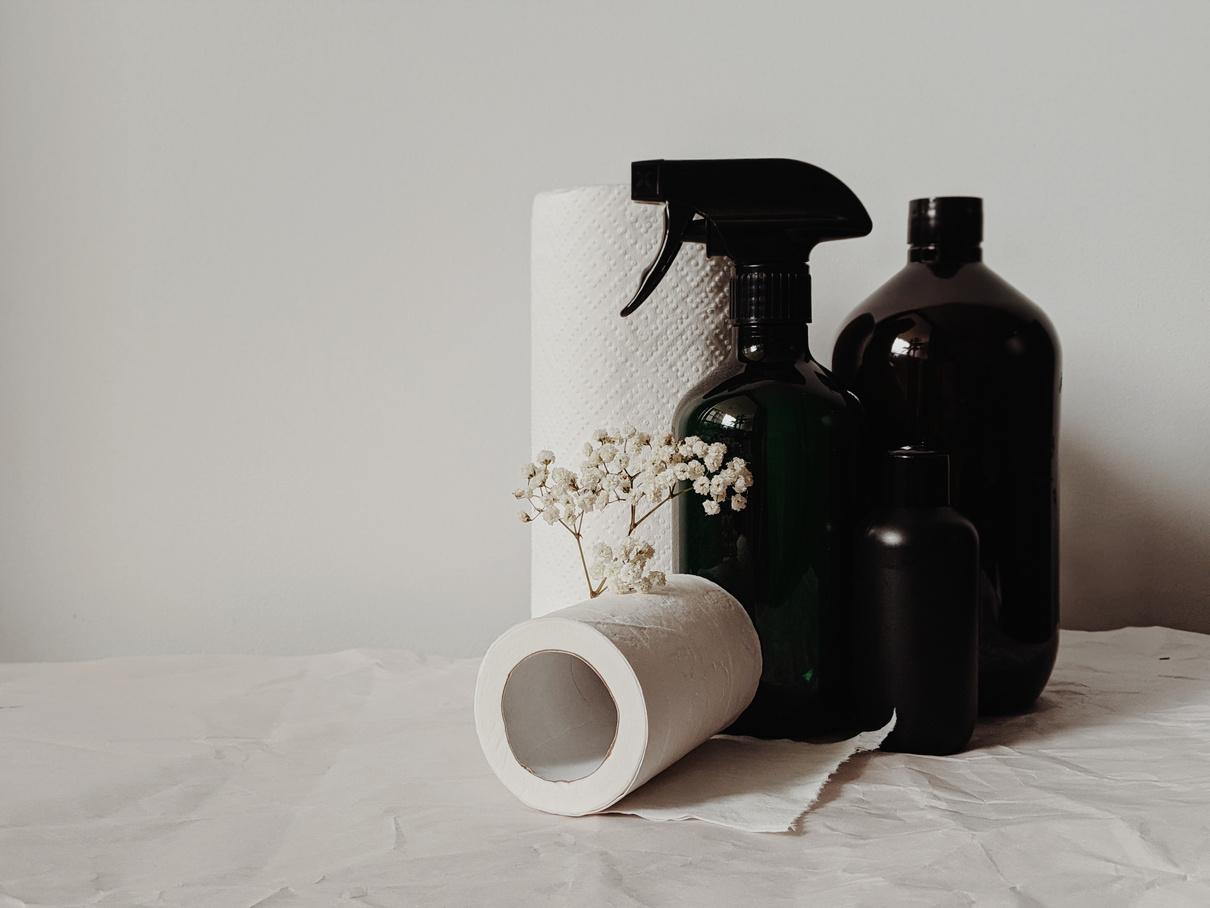 BY DR VIVIAN CHEN
BY DR VIVIAN CHEN
DISCLOSURE & DISCLAIMER
I am an affiliate for some of the products recommended in this guide, which means I will receive a small commission if you use my link. I only share products I personally use and love, and your support helps me continue to creation of more educational content for free,
The content contained in this guide are for informational and educational purposes only. To the fullest extent permitted by law, we expressly exclude any liability for any direct, indirect or consequential loss or damage incurred by you or others in connection with our Website and its Content, including without limitation any liability for any accidents, delays, injuries, harm, loss, damage, death, lost profits, personal or business interruptions, misapplication of information, physical or mental disease, condition or issue, physical, mental, emotional, or spiritual injury or harm, loss of income or revenue, loss of business, loss of profits or contracts, anticipated savings, loss of data, loss of goodwill, wasted time and for any other loss or damage of any kind, however and whether caused by negligence, breach of contract, or otherwise, even if foreseeable. You specifically acknowledge and agree that we are not liable for any defamatory, offensive or illegal conduct of any other Website participant or user, including you
In addition, information about products listed is accurate at the time of writing this guide. However, we cannot be held responsible for any ingredient swaps or manufacturing changes that may occur outside of our control with brands mentioned here.
ABOUT ME
Hi, I'm Dr. Viv, I've been helping people address the root cause of their health issues for 10+ years. One of the most common and important causes is environmental toxins - something most doctors were not taught at medical school.
I went to medical school in London (UK) and have 15 years of clinical experience in internal and family medicine, but my world turned upside down when my daughter was hospitalized soon after being born with symptoms no doctor could figure out.
Through doing my own research, I was able to help my daughter recover. I also realized that the many years of chronic fatigue, acne, and brain fog were due to environmental toxicity. This opened the world of root causes I had never considered before as a conventional doctor. I have since been able to help hundreds of clients reclaim their health through 1:1 coaching and my course Detox Right.
I now live in San Francisco, and am on a mission to help as many people reduce their toxic load as possible, because I truly believe environmental toxins to be an important root cause of many chronic health conditions.
@plateful.health Receive more helpful health info via email from me Website: www.platefulhealth.com
THEGOALISNOT

If you're feeling overwhelmed, angry or depressed. I feel you.
I was in your shoes 10 years ago when I first started my non-toxic living journey. I was paralyzed by the many changes that needed to be made; apathetic since everything seemed to be contaminated, angry that regulations fail to protect us.
However, I decided to take that first step. Weeks after, we felt more energy, better sleep, better skin, better breathing, and better mood. That prompted me to make more and more changes. With each change we made, we experienced more benefits.
I want you to know that the goal is not a 100% toxin-free life - I don't believe that is possible, plus we DO have organs that help eliminate toxins we come across.
So the goal is to minimize our exposures to a low level that our bodies can comfortably deal with and eliminate.
In this guide, you will learn the steps I prioritized and the order I implemented them. I hope this helps you and your family.
The goal is to focus on the very next step - just one. Please do not feel like you have to race through this guide in one go. One step at a time will lead to big transformations over time.
I'm rooting for you!
100%AVOIDANCE
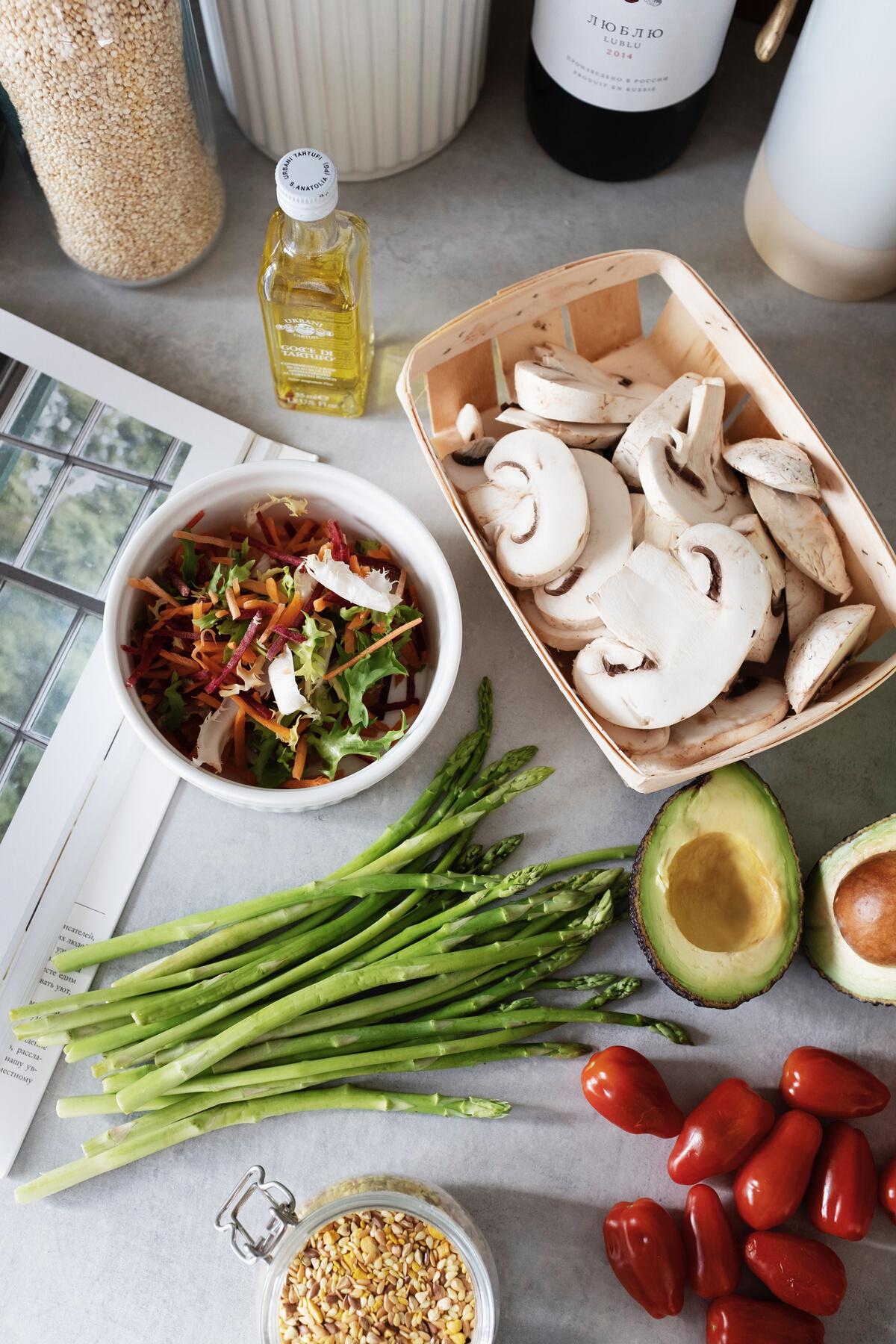
STEP1
Clean up your diet
This is the first step I prioritized for my family.
A: Try to buy organic from the dirty dozen. (See graphic below)
B: Eat more plants and fiber. Animal products can be a concentrated source of persistent organic pollutants like PCB, dioxins, and more.
Learn more about the EWG 2022 Dirty Dozen + Clean 15 here.
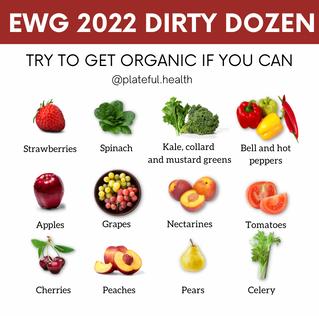
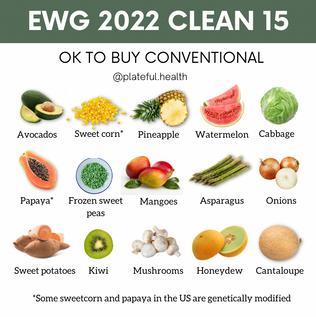
CAN'T BUY ORGANIC?
It's still beneficial to eat fruits and veggies that are conventionally grown. And studies have shown these two methods of washing may help reduce some surface pesticide residues
Baking Soda + Water Solution Salt + Water Solution
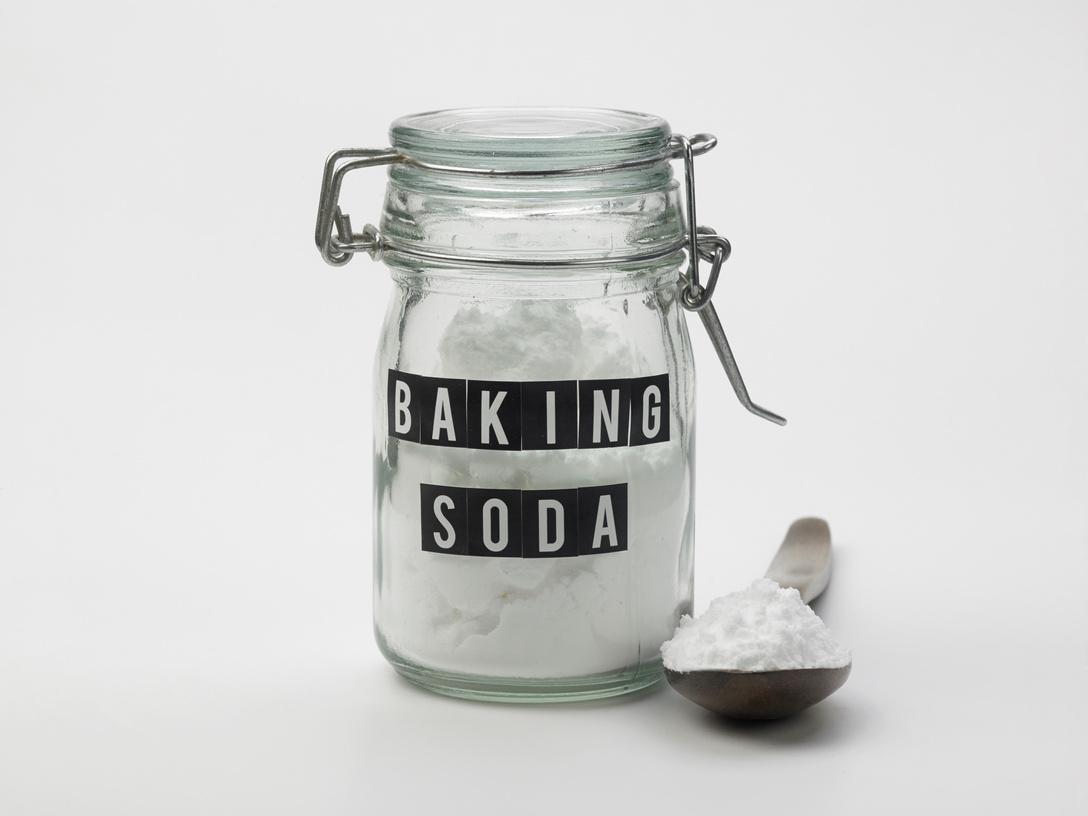
Soakinbakingsoda washfor12-15min
1%solution(2tspbaking sodawith4.5cwater)
Soakin10%saltsolution
Rinse+patdry (canalsouseneatvinegar) (1/2csaltwith4.5cwater)
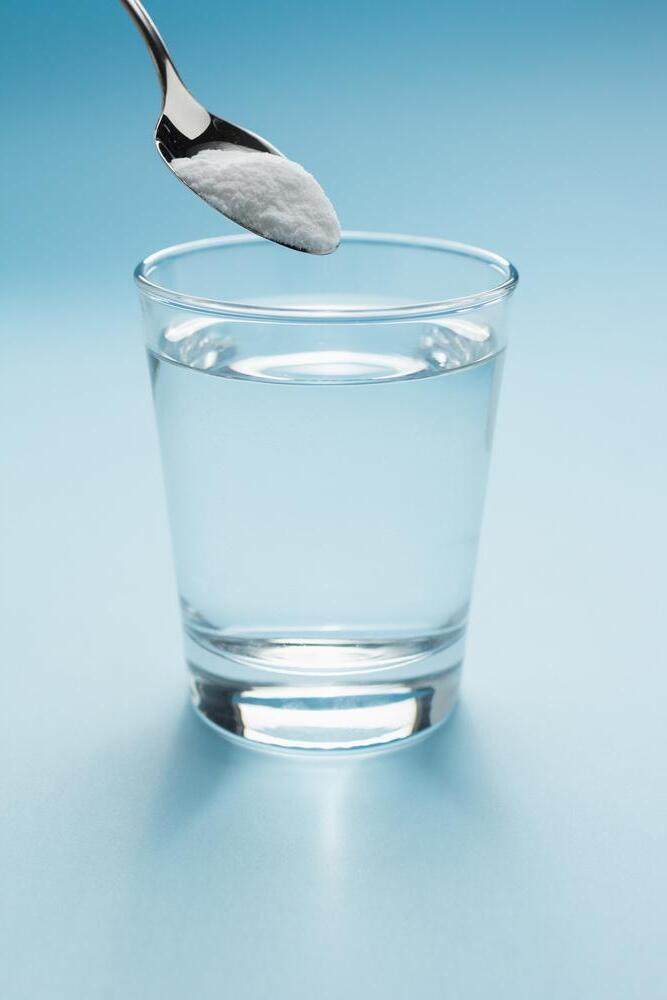
(PMID: 29067814) (PMC: 3907644)

bars, or granola bars in the form of syrups, table/cane sugar, agave. Ultra-processed food are things like chips, baked goods, cereal, and usually contain inflammatory ingredients listed below.
D: Avoid omega 6 dominant oils like sunflower, vegetable, corn oil - which is often used in ultra-processed food.
These are usually extracted via a chemical process and may contain harmful residues, e.g. hexane (a neurotoxin with chronic exposure). Sunflower and vegetable oils are also higher in omega 6 content, which can cause inflammation. Instead, use extra virgin olive oil, avocado oil, or broth when you are cooking.
E: Reduce inflammatory foods.
Common ones are dairy*, cured meats, alcohol, fried foods, refined sugars, and refined flours.
F: Minimize animal products
These tend to have higher levels of environmental toxins e.g. PCB, dioxins, pesticides, heavy metals, which bioaccumulate over the lifetime of the animal and especially in the fat. If you do eat animal products, look for organic + pasture-raised, avoid the fatty cuts and look for better seafood here. If you are looking for low mercury fish, the acronym SMASH might help Sardines, Mackerel, Anchovies, Salmon, Herring. Avoid farmed fish, as these can be a source of PCB/dioxins.
*Speak to a dietician about adequate calcium intake before eliminating dairy, as calcium is an important nutrient.
STEP 2

FilteryourAir
Everydaywebreathe11,000litersofair.Mostpeopledonot realizethattheairtheybreathecanbeamajorsourceoftoxins thatenterthebody:VOC,dust,PM2.5,petdander,mold spores...andmore.
TheEPAhasfoundindoorairtobe2-5xmorepollutedthan outdoorair.AccordingtotheWHO,bothshort-andlong-term exposuretoambientairpollutioncanleadtoimpairedlung function,respiratoryinfections,andaggravatedasthma.
Maternalexposuretoambientairpollutionisassociatedwith adversebirthoutcomes,suchaslowbirthweight,pre-term birth,andsmallgestationalagebirths.Emergingevidencealso suggestsambientairpollutionmayaffectdiabetesand neurologicaldevelopmentinchildren.Thereisalsoevidence linkingPM2.5particleswithcardio-respiratoryproblems.
ConsideranAirPurifier...
IusetheAirDoctorbecauseithasanultra-HEAPfilter,whichis 100xmoreeffectivethananordinaryHEPAfilter.
ItcancaptureairborneallergensandpollutantslikeVOC, bacteria/viruses,dust,moldspores,downto0.003micronsin size,whichis100xmoreeffectivethanordinaryHEPAfilters, powerfulenoughtofiltertheairina2400sqfroomonceevery hour,ora900sqfspace3xinanhour.

Learn more about the AirDoctor here.- my affiliate link will get you up to 40% OFF your purchase and access to a monthly payment option if it helps.
Other good brands: Austin and IQ air, around $500-$800.
Candles/air fresheners
Avoid candles and air fresheners, which do nothing to 'freshen' your indoor air. They actually dirty your air by adding harmful chemicals like benzene, toluene, phthalates into your air.
Use essential oils instead or if you must use an air freshener, Grow Fragrance, is a better option.
Better candle brands include Pure Plant Home, Terralite. Fontana and Meaningful Mantra - check out my blog post on candles if you want to learn more.
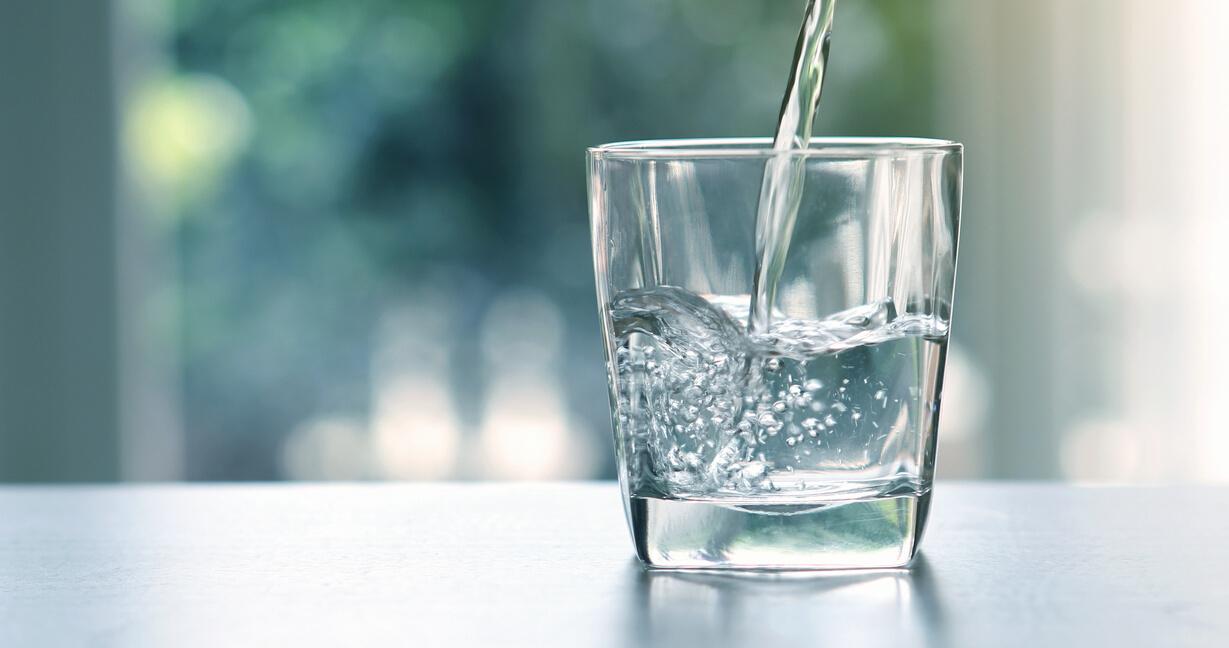
STEP 3
Filter your Water
Drinking enough water and staying hydrated is an important aspect of detoxification. However, could you be adding to that toxin burden when you drink water?
In a 3 year study by the Environmental Working Group between 2004-2009, which analyzed 20 million tap water samples, 316 contaminants were found -- including industrial solvents, weed killers, refrigerants and the rocket fuel component perchlorate. So if we are keeping hydrated, it is essential to ensure the water we drink is clean.
Municipal water can be contaminated by a range of harmful chemicals e.g. heavy metals, pesticides, prescription medications. I'm not a fan of bottled water because...
a) Plastic can be a source of endocrine disruptors that leach into the water, especially in heat and sunlight. This plays havoc with our hormonal and reproductive health.
b) Glass bottled water is costly and inconvenient. It works out cheaper, in the long run, to invest in a quality water filter. If you are a purist, you will get your tap water tested first to see which water filter is best (many labs can do this, e.g. Tapscore).
c) Bottled water is regulated as a 'food' and therefore not subject to strict water testing standards i.e. it may not be any safer than just tap.

There are three basic types of water filters: carbon filtration, reverse osmosis, and ion exchange.
a) Ion exchange filters are known as water softeners, and they are potentially the least beneficial, as they only work to reduce minerals, like calcium and magnesium, which improve the taste of water, but these filters do not really remove any other contaminants.
b) Carbon filtration filters can use either a carbon block or granulated activated carbon (better than just carbon), which binds to contaminants in the water and traps them in the filter as the water trickles through. This type of filter varies in effectiveness, depending on what contaminants are in your local tap water and what they are certified to remove. Some only decrease the amount of chlorine and help your water taste better, while others can reduce contaminants such as asbestos, lead, mercury, and VOCs. They usually do not remove any inorganic pollutants like arsenic, fluoride, and nitrates. The manufacturer should be able to tell you what their filter is capable of filtering, so ask to see the report - make sure it is NSF certified.
c) Reverse osmosis water filters are the most robust. They are usually built with both activated carbon and a membrane, which allow them to remove most contaminants like chlorine, VOCs, and any particles that are larger than water molecules, which include arsenic, fluoride, nitrates, and others. However, this process wastes a lot of water, as the filters usually take in about five times the amount of clean water they pour back out. Another drawback is that this treatment also removes important minerals like iron, calcium, and magnesium, so you may have to add back these minerals - check with your doctor first.
WATER FILTERS CONT...
There are also distillation water filters that vaporize water into steam and then condense it back down, this process also removes minerals along with bacteria, viruses, and chemicals that have a higher boiling point than water However, it leaves chlorine, VOCS, and other chemicals in the water
Whole house filters are also another option The thing to note is that it does not necessarily filter your drinking water, so you may need another system for that The main advantage is that the water you are showering/bathing in will now be filtered
Since we are not drinking shower/bathwater, the main concern I have with the bathwater is chlorine, which can vaporize - you can overcome this with a shower filter like Aquabliss and Cuzn Bath ball They don't remove 100% of the chorine but they can reduce it
Overall, there is no one best water filter system - it is not a “one size fits all” type of investment You should look for filters for specific contaminants based on where you live and choose one that is certified by a third party to be effective at reducing or removing those specific contaminants
A helpful guide is the EWG’s Tap Water Database, which uses data from nearly 50,000 local utilities in 50 states to provide you with a list of contaminants found in your local drinking water that is coming through your tap so that you know what your filter needs to remove
Another way is to contact your local water supplier directly or send a water sample to a lab like TAPSCORE
Tap Score is also unique in that once they've tested your water, they will recommend the appropriate water filter for you, taking the guesswork out of finding the right water filter

WATER FILTERS I LIKE
As I said, the best way to pick the right water filter is to first look at your water quality, and then pick a filter that can remove the contaminants.
Greenfield water is a company I've spoken to at length and they seem to really understand water filtration, and supply NSF certified units. They can look at your water report, and pick the right water filter to suit your needs, including whole house filters. Mention Platefulhealth for 10% off your order.
Pure Effects is another reputable company but I've not personally spoken to them or tried their products.
If you want a portable, countertop unit, Aquatru is a great Reverse Osmosis unit that has been tested to NSF standards. It does require regular cleaning, and can cause quite a bit of water wastage.
Be sure to look for NSF certification on water filters you buy!
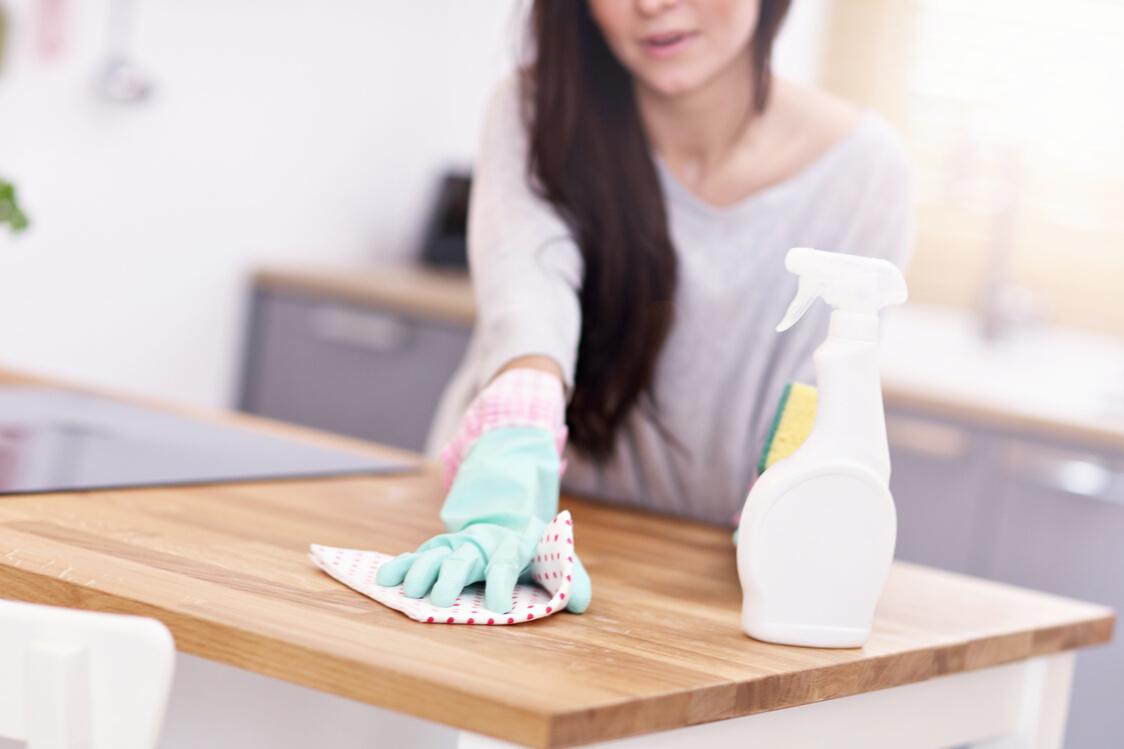
STEP4
Household Cleaners/Laundry:
Cleaning and laundry detergents that are conventionally used can contain many toxic chemicals.
Companies are NOT required by law to list all the ingredients on the label - they are only required to list ones ‘of known harm’ - and since most of these chemicals have not been adequately tested for long-term safety, this is yet another loophole that companies can utilize to their advantage.
The EPA estimates that indoor air is 2-5x more polluted than outdoor air with most of the contaminants coming from household cleaning products, air fresheners, and common everyday items. Some of the harmful chemicals are direct irritants and can cause immediate symptoms like asthma, eye and skin irritation (e.g. chlorine, ammonia), and some have long term health consequences when inhaled and accumulate in our tissues (e.g. 1,4 dioxane, phthalates)
One of the first things to look for on the ingredients list and avoid is products with the term 'Fragrance' listed. Fragrance may hide endocrine disruptors like phthalates. This is commonly found in laundry detergents and cleaning products.
Safer options to consider for your cleaning would be vinegar or castor oil soap-based products e.g. Dr. Bronner.
Also - look out for those warnings on the back of the bottlesthese tell you that the chemicals used carry health hazards.
Perhaps some of the most toxic is bathroom cleaners, let's take a look at some common ingredients

Intellectual Property of Plateful Health LLC
Bathroom cleaners can be full of harmful chemicals, which are endocrine disruptors that can affect our lung health and cause irritation and allergic reactions Many people report better breathing once they remove toxic chemicals from their bathroom cleaners
I personally love and use the Branch Basics line of cleaning products for ALL the cleaning in my house Use code Platefulhealth for 15% off starter kits.
HOUSEHOLD CLEANING CONT...
Other than Branch Basics, you can also make your own DIY cleaners. The truth is, we really don't need a separate cleaner for everything. Vinegar, baking soda can do wonders. If you need recipes, this is a great resource.
There is a difference between cleaning and disinfecting:
- Cleaning - removes dirt and germs, lowers their numbers, and reduces the risk of infection. This can be done with soap and water
- Disinfecting - kills the germs. This usually requires harsh chemicals e.g. bleach, which may harm us. So the risk of harm must be weighed up against the benefit of disinfection. In some cases, e.g. in hospitals, immunosuppressed individuals, or where there is a high risk of infection, it is absolutely necessary. However, I do not disinfect in my home very often, I mostly 'clean' with Branch Basics.
If you need to disinfect, isopropyl alcohol and 3% hydrogen peroxide are great options (be very careful with these around children, they should be out of reach).
Force of Nature is also a better-for-you disinfectant that I have in my own home.
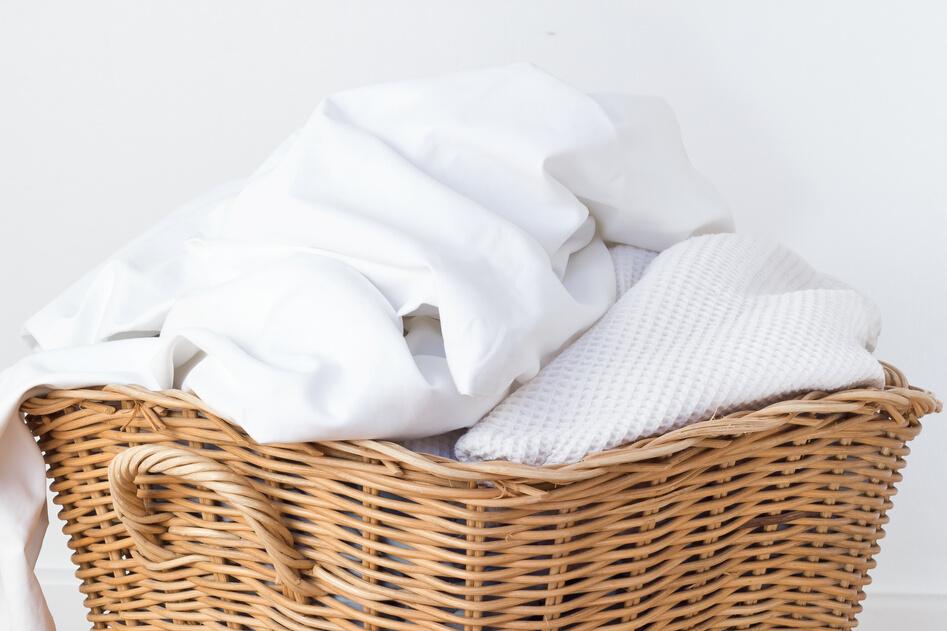
We've been marketed to believe our laundry should smell like spring meadows when these lingering fragrances could be damaging our health. A study found more than 25 VOC*s emitted from the dryer vents, including nine classified as toxic or hazardous e.g. acetaldehyde, acetone, methanol, ethanol, and limonene. (*VOCS are harmful gas particles emitted from solids or liquids e.g. from furniture, paint, laundry detergents)
Some ingredients to look out for and avoid:
Fragrance - Manufacturers are not required to disclose what is hidden under this umbrella term, and it can encompass endocrine disruptors like phthalates which ‘fixes’ the smell to the clothes. Optical brighteners - added to make clothes appear whiter, can cause skin irritation-hides under myriad of names.
SLS - is an irritant to the respiratory tract. SLES is an ethoxylated compound which therefore carries the contamination risk of 1,4 dioxane (a probable carcinogen).
Methylisothiazolinone & Benzisothiazolinone - skin toxicant and allergen, neurotoxic in vitro studies.
Nonylphenol Ethoxylates (NPEs) - many compounds in this family of chemicals e.g. 1,4-dioxane and ethylene oxide are associated with endocrine disruption, cancer and organ toxicity.
Sodium hypochlorite - sensitizing allergen/irritant, organ toxicity.
Formaldehyde - human carcinogen, organ toxicity.
I use Branch Basics. for my laundry too - The oxygen boost has been a lifesaver for me to deal with stains, heavily soiled clothes. The concentrate bottle doubles up as a kitchen/bathroom cleaner, dish soap, and laundry detergent so it simplifies my cleaning AND saves me money. Other brands I like: Molly's Suds, Meliora, Attitude.
We have to move away from the marketed belief that scented clothes = clean clothes. Artificial fragrance is anything but clean.

STEP5
Kitchen:
Kitchen cleaners are an obvious source of harmful chemicals and I use my Branch Basics to clean the kitchen too.
Consider eliminating BPA plastic, which can be found used for food packaging, canned food, storage containers etc. Even if a plastic Tupperware or bottle says BPA-free, companies can use substitutes like BPF/BPS which have been shown to have similar biological effects as BPA in animal studies.
Anti-microbial items like cutting boards may be coated with endocrine disruptors, like triclosan - opt for whole piece wooden boards rather than plastic.
Start moving towards using glass products whenever possible, for example, glass Tupperware. I know glass jarred food items can be more expensive, so I prioritize by purchasing acidic foods in glass jars e.g. tomato sauce, apple cider vinegar because acidic foods can cause BPA and other chemicals to leak more.
Non-stick/Teflon emits chemicals from the PFAS family (Perand polyfluoroalkyl substances) - PFOA, PFOS, PTFE, GenX are all examples. This group of chemicals has been called 'forever chemicals' because they do not break down easily and are now found in our water/environment.

PFAS has been linked with:
- thyroid disease
- fertility issues, low birth weight
- neurodevelopmental problems, lowered IQ
- Liver damage and increased cholesterol
- Certain cancers, like kidney and testicular
I recommend replacing Teflon pans with cast iron or stainless steel. I like Field Cast Iron because it is preseasoned. Lodge is also good but needs pre-seasoning.
I also love Xtrema (platefulhealth for 15% off), it is 100% ceramic (most ceramic cookware is coated). For more information, check out my cookware guide.
Stainless steel brand I like: Allclad.
STEPS TO TAKE in the kitchen:
- Swap out plastic cups/Tupperware/bottles/utensils for glass, 18/8 or 18/10 stainless steel
- Swap out non-stick for cast iron, stainless steel, or Xtrema
- Buy glazed pottery or ceramic that is made in the USA because of possible lead exposure.
- Reduce canned items, especially if acidic, e.g. tomato sauce. Batch cook your legumes and freeze them in portions in Stasher bags.
Check out my Amazon shop for other kitchen brands and gadgets I like.
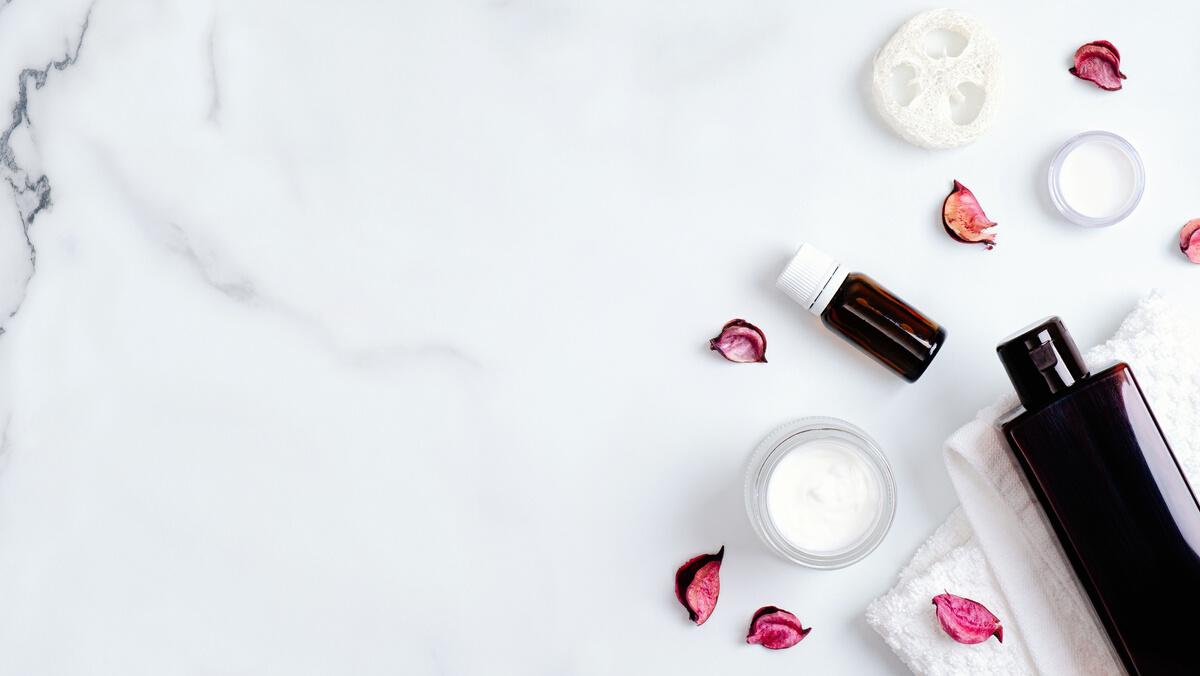
STEP6
Personal Care:
In American, women put an average of 168 chemicals on their bodies each day through the use of personal care productsmost of these chemicals have not been shown to be safe in humans.
Our skin is our largest organ, and what we put on our skin can be absorbed into our bodies and affect our health.
In the US, ONLY 11 chemicals have been banned by the EPA for use in cosmetics, compared with 1328 in the EU.
Sadly, the onus is on the consumer to do the research and protect themselves from harmful chemicals.
I highly encourage avoiding products with:
parabens
Phthalates
Fragrance
PEG
SLS/SLES
DMDM hydantoin
Imidazolidinyl urea
Diazolidinyl urea
Quaternium-15
Many of these are skin irritants, some can act as endocrine disrupters and affect our hormones, or be contaminated with carcinogens like 1,4 dioxane.
To help you look for better products, use the EWG skin deep database and look for products rated < 3. Think Dirty is another app you can use to find better products.
Here are some personal care product brands that I personally use at home and love:
Osea Skincare- Clean & vegan skincare in sustainable packaging. Platefulhealth for 10% off first order
Aleavia- My favorite shower gel -Platefulhealth15 for 15% off
DIME - clean, affordable skincare that delivers results in sustainable packaging. Vivianchen for 20% off
Naked Poppy Clean Makeup- uses a clever artificial intelligence algorithm to find nontoxic makeup that suits your skin type and tone. They even got my foundation shade perfectly without me having to test a whole bunch - use Platefulhealth for 10% off your first order
Risewell Toothpaste & floss - Plateful10 for 10% off
Evolvh Haircare: Use code platefulhealth for 15% off
Just Ingredients: Deodorant, dry shampoo, hydroxyapatite toothpaste, face serum Platefulhealth for 10% off

STEP7
Furniture/Bedroom:
Youmaybesurprisedtoknowthatfurniturecanbeasource ofhazardouschemicals.Chemicalslikeflameretardants havebeenaddedtothefabricofmostfurniture,whichis extremelytoxictoourhealth.Irecommendsearchingfor flame-retardant-freefurnitureandfilteringyourair.Startto removethetoxinsinyourbedroombypurchasingtoxin-free pillows,linens,andmattresses.Theseproductscancontain toxicpolyurethane.Findincredible,trustednon-toxic mattressesIuseandlovehere.(Platefulhealth15for15%off)
AmoreaffordablebrandisHappsy-theyalsotickallthe boxesformefornon-toxicmattressandpillows. (platefulhealth225for$225offtheirmattresses)
Avocadomattressisalsoanotheroptionthatlooksgoodbut I'venotpersonallyhadanyexperiencewiththem.
Also,notethatfurnitureandbedroomproductswerethe lastchangethatImadetoreducetoxinsinmyhome.Goat yourownpacewhenmakingtheswitch.
Fornon-toxicbedding,IloveSimplyOrganicsBambooasit hasbeenOeko-texcertifiedtobefreefromharmfullevelsof morethan100toxicsubstancesandispossiblythemost comfortablebeddingI'veeverused.Affiliatecode PLATEFULHEALTHfor25%off.
Someotherplacestolookfornon-toxicbedding:Coyuchi andNaturepedic
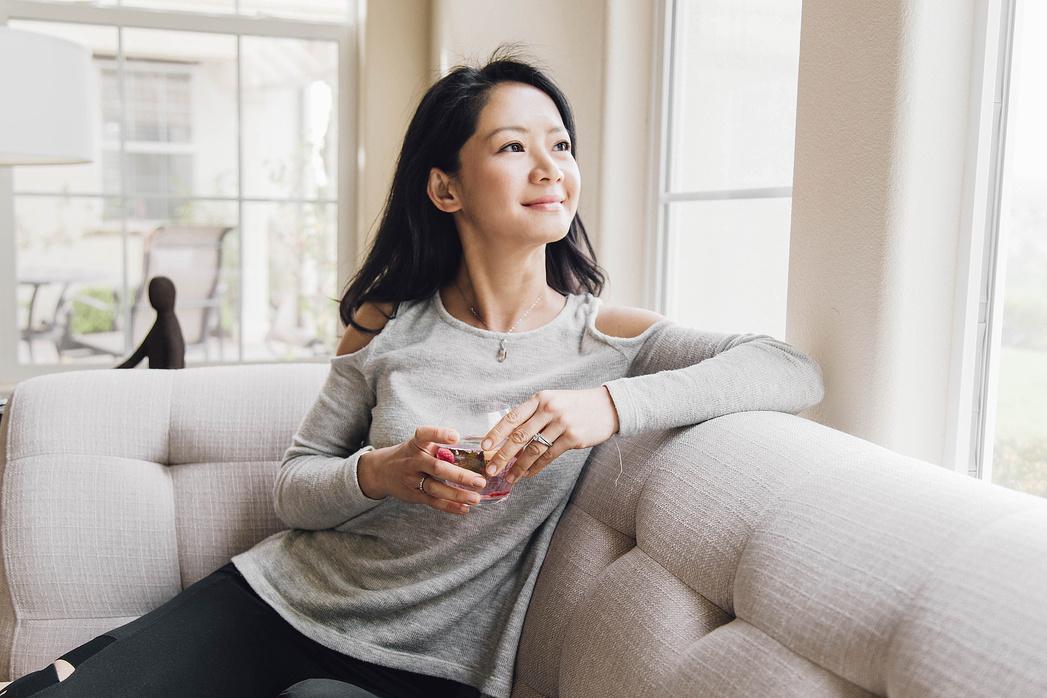
For more tips, be sure to follow me on Instagram.
For other #drvivapproved items, please visit my AMAZON STORE or my website.
We can't avoid toxins in our environment 100%. Instead of worrying about every exposure, we can also support our detox organs so they can eliminate exposures outside of our control. Learn how to detox the RIGHT way here.
PLATEFUL HEALTH
 BY DR VIVIAN CHEN
BY DR VIVIAN CHEN
















